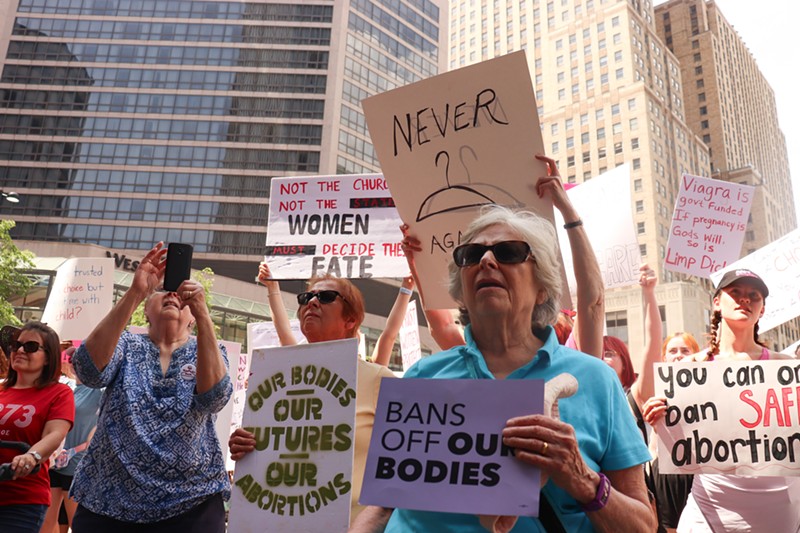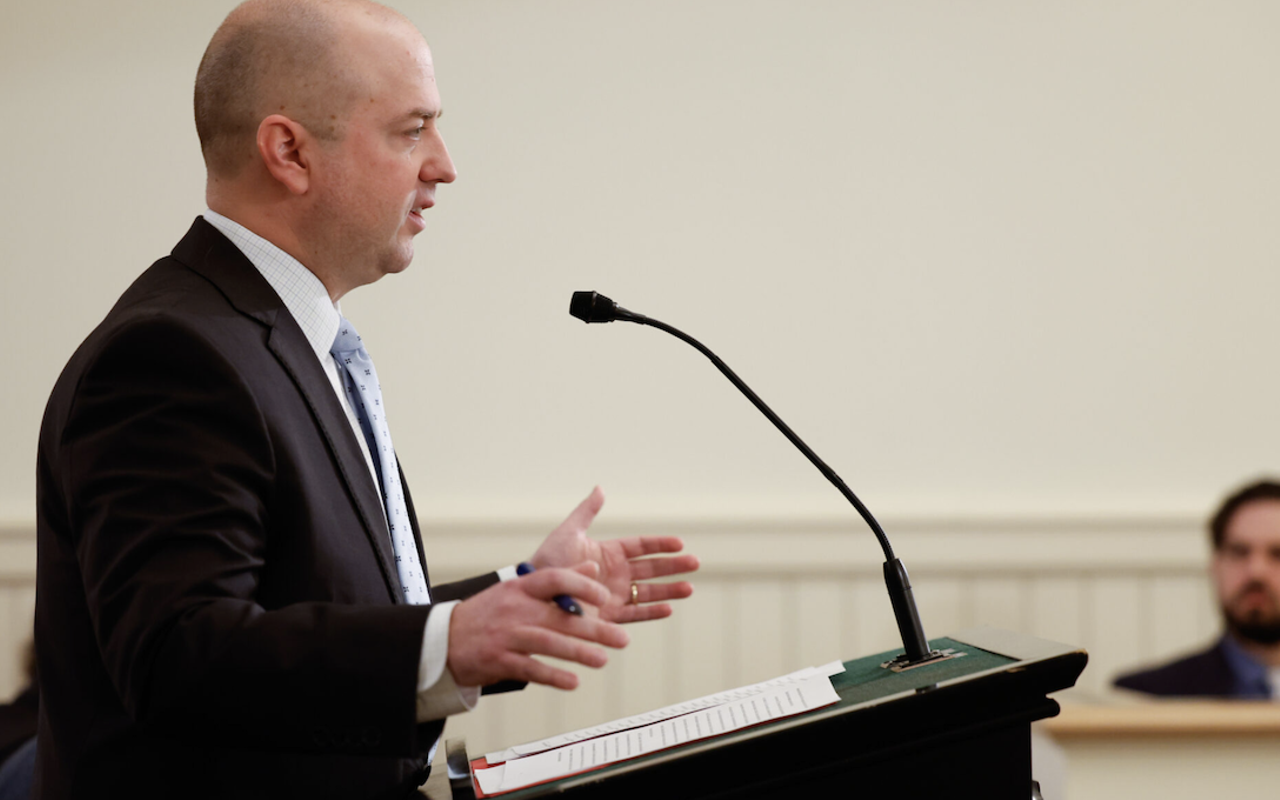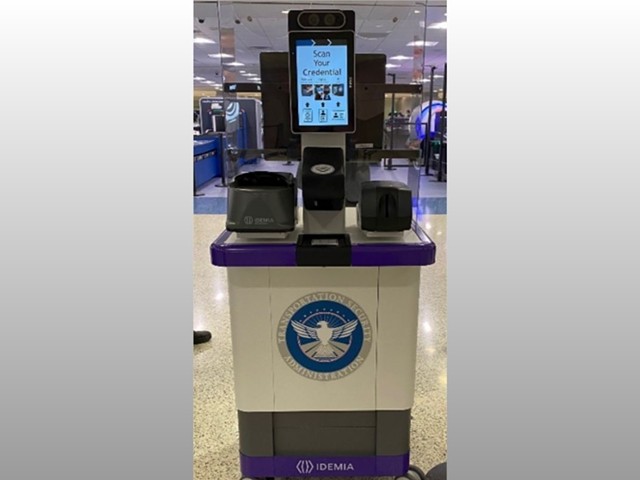Supporters of the push to make it a lot harder for voters to amend the Ohio Constitution have given many, sometimes-inconsistent reasons for wanting to do it. But clearly a major one is to try to block an abortion-rights amendment that is currently in the works.
To pull off the maneuver, abortion opponents are trying to partially repeal a ban on August elections they passed just months ago so they can put the amendment on the ballot in a low-turnout contest. But the last time anti-abortion groups tried something like that it blew up in their faces — in a state that is considerably more conservative than Ohio.
In the face of intense public opposition, Ohio House Republicans are coming down to the wire as they decide whether to put a measure on the August ballot that would raise the portion of votes needed to pass a constitutional amendment from 50% to 60%.
It also would make it far harder for voters to get amendments on the ballot by requiring that a certain number of the already-huge number signatures needed come from each of Ohio’s 88 counties. That’s twice as many as the current 44.
There are constituencies beyond the anti-abortion movement behind the effort to restrict access to the state Constitution. The Ohio Restaurant Association is supporting it as efforts gather steam to pass an amendment raising the state minimum wage to $15 an hour. The Buckeye Firearms Association, which fears gun-control amendments, is backing it as well.
And there are legislative Republicans worried that a tighter anti-gerrymandering amendment will be passed after a GOP-dominated redistricting commission ignored seven state Supreme Court rulings saying the congressional and legislative maps it adopted violated earlier amendments that had passed with more than 70% of the vote.
But fear of an abortion-rights amendment is also a powerful part of the coalition behind the push to lock down the state Constitution. Ohio Right to Life supports the effort, and one of the effort’s leaders, Rep. Brian Stewart, R-Ashville, last year told colleagues that stopping an abortion-rights amendment was one of his main purposes.
Recent history
It might not seem fair, but even though the measure would require that all future amendments get 60% of the vote to make it into the Constitution, the amendment Ohio’s Republican leaders want to put on the ballot would only need to meet the current 50% threshold. And by trying to put it on the August ballot — in which sub-10% voter turnouts are common — they seem to be banking on getting the most committed anti-abortion voters to the polls while those who support abortion rights go about their summer routines.
If so, that ignores recent history. Anti-abortion lawmakers tried something similar in conservative Kansas last August — and they lost in a stunning, 19-point blowout.
Leslie Butsch, field director for the ACLU of Kansas, helped organize the movement to amend abortion rights into that state’s Constitution. On Wednesday, she explained what happened there, which might help explain how things could play out in Ohio.
In 2019, the Ohio General Assembly passed and Gov. Mike DeWine signed Senate Bill 23, which outlawed the vast majority of abortions after about six weeks of pregnancy — a point at which many women don’t know they’re pregnant. The same year, the Kansas Supreme Court struck down restrictions signed into law there, finding that they violated protections of bodily autonomy in the Kansas Constitution.
“We immediately knew that the next step for the anti-abortion advocates was going to be to change the Constitution to get the right to abortion out,” Butsch said, adding that she and her colleagues started organizing.
Unlike in Ohio, the only way to get a constitutional amendment on the ballot in Kansas is by first passing it through the legislature. Interestingly, an initial attempt to pass an anti-abortion amendment couldn’t get enough votes in 2020 in the GOP-dominated Kansas House. But many of the Republicans who voted against it lost their primaries later that year, and a similar amendment passed in 2021.
Thunderclap
The Kansas abortion opponents wrote the law in such a way that it would go on the ballot for the Aug. 2, 2022, primary. Kansas is a “closed primary’ state, meaning that you have to be a member of a party to vote in its primary election.
“They put this amendment on the primary ballot and that was absolutely a direct attempt to suppress voters,” Butsch said. “We ran into a lot of misinformation, particularly for independents.”
In Kansas, she explained, unaffiliated voters outnumber Democrats, and both groups have reasons not to vote in primaries — unaffiliated voters because they don’t belong to a party, and many Democrats because they live in districts where Republicans run unopposed.
“That was a huge education campaign we had to do with independents and unaffiliated voters,” Butsch said. “Even though it was a primary and they may not have voted in a primary before, they had to vote on this one and they could vote on this one.”
While federal abortion protections still stood, debates over abortion laws in Ohio and Kansas were somewhat academic. But on Friday, June 24, 2022, came a thunderclap. The U.S. Supreme Court handed down its decision in Dobbs v Jackson Women’s Health Organization, overturning abortion protections enshrined in Roe v Wade nearly a half-century earlier.
In Ohio, Attorney General Dave Yost rushed into court to immediately put into effect Ohio’s 2019 law, which provides no exceptions for rape and incest. Within weeks came the story of a 10-year-old rape victim who was forced to travel from Columbus to Indianapolis for an abortion. That story was quickly followed by others of more minor rape victims, chaos in abortion clinics and seriously ill women who couldn’t get care in Ohio.
In Kansas, no restrictions took immediate effect because of the 2019 ruling by the state Supreme Court. But at a huge, emotional rally the day of the Dobbs decision in Kansas City, Mo., the significance of the situation across the state line in Kansas was apparent to everybody, Butsch said.
“Every other speaker who spoke that day, Friday, June 24, said Kansas is the first state that has the opportunity to protect abortion at the ballot box and that is on Aug. 2. Vote no,” she said.
Combating confusion
People who wanted to support abortion rights in Kansas had to vote no because in addition to putting it on the ballot for a low-turnout, closed August primary, its supporters used confusing language that required a counterintuitive vote, Butsch said.
But she explained that as she and her colleagues worked to educate voters and organize them, they had some powerful forces on their side. One was a strong libertarian streak among the electorate — including among many Republicans.
“Beyond abortion, Kansans love the government not interfering in their lives,” Butsch said. “We knew that if this amendment were successful that would lead to an all-out abortion ban, and that was our message. That was really compelling to people. Vote no and don’t let the government interfere in your personal medical decisions.”
Another assist came because the campaign wasn’t about a person running for office, with all the noise and sloganeering that comes with partisan politics.
“Because they got to vote for an issue and not necessarily on a candidate, that turned out a lot of people,” Butsch said. “This wasn’t a partisan issue. This was folks from all parts of the political spectrum turning out for this issue specifically. We found it to be a motivator. They didn’t want to just sit it out and see what happens. People wanted to make sure their voices were heard.”
Then August 2 came and the abortion-rights side won by a margin that gobsmacked observers throughout the United States. The intensity and scale of abortion-rights support has since been confirmed in Kentucky, Michigan and Wisconsin.
Butsch said that within Kansas, support for her cause was spread across the state, which has vast rural stretches.
“I knew we’d have the metro areas, but a lot of the rural counties that went heavily for Trump were really close as well,” she said.
Backlash
So, if supporters of restricting voter access to the Ohio Constitution get the matter on the August ballot, how hard will it be for abortion-rights advocates to get their voters out not just in November, but also three months earlier?
Butsch said that it will require a lot of work, explaining the wrinkles. But she said when the other side makes it confusing and difficult to vote “that’s an incredibly motivating thing that people can agitate around.”
She added, “Having to educate on all these different things and all these multiple times to vote complicates things, but I also know the organizers can pull back the curtain and say ‘Yeah. This is really complicated and confusing and here’s why: These folks want to suppress your vote and they don’t want to hear from you. They’re hindering the democratic process.’ That’s the same thing we said about the language in our amendment and the fact that it was on a primary. We said, ‘Doesn’t that make you mad? And aren’t you going to turn out and get five of your friends, too?'”
This story was originally published by the Ohio Capital Journal and republished here with permission.
Coming soon: CityBeat Daily newsletter. We’ll send you a handful of interesting Cincinnati stories every morning. Subscribe now to not miss a thing.
Follow us: Google News | NewsBreak | Reddit | Instagram | Facebook | Twitter
This story was originally published by the Ohio Capital Journal and republished here with permission.
Coming soon: CityBeat Daily newsletter. We’ll send you a handful of interesting Cincinnati stories every morning. Subscribe now to not miss a thing.
Follow us: Google News | NewsBreak | Reddit | Instagram | Facebook | Twitter









